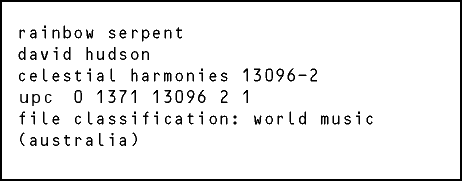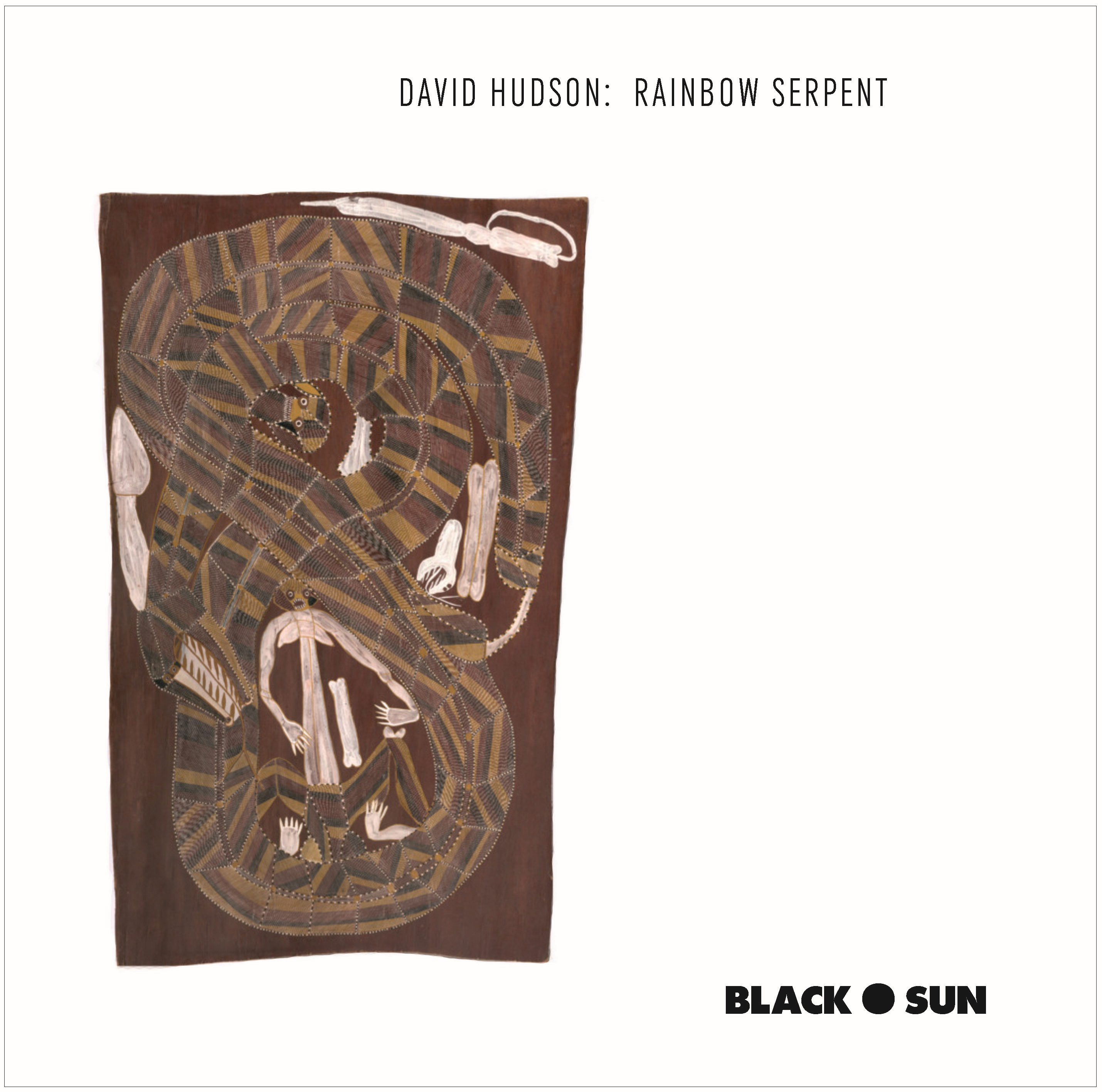 |
||||||||||||||||||||||||||||||
 
Die australischen Ureinwohner verzichteten bewusst auf Ackerbau und Viehzucht. Das Land war ihnen heilig. Neuere archäologische Forschungen scheinen zu bestätigen, dass die Kultur der Aborigines, die sich u.a. in Felszeichnungen erhalten hat, gut 50.000 Jahre alt, der Kontinent jedoch wenigstens 176.000 Jahre von Menschen bewohnt ist. Das Hauptmusikinstrument vieler Aboriginesvölker, ein von Termiten hohlgefressener Eukalyptusstamm, erlebt bei uns im Westen unter dem Namen 'Didjeridu' (auch Didgeridoo, kurz „didge“) einen wahren Boom. Bei den Ureinwohnern hat das Instrument entsprechend den vielen verschiedenen Sprachen viele Namen. So simpel das Rohr aussieht - wird es von Könnern wie den Aboriginal-Musikern David Hudson, Matthew Doyle, Alan Dargin und Mark Atkins geblasen, entstehen Klangwelten von unerschöpflicher Vielfalt. An den Produktionen wirkten mit: Michael Atherton (Professor und Leiter/Gründer der Musikfakultät der Universität von Western Sydney), Steve Roach u.a Die Regenbogenschlange ist ein mächtiges Wesen der Traumzeit. David Hudson erweckt diesen Mythos im Hörer durch seine röhrende, obertonreiche, magische Didjeridu und uralte Perkussionsrhythmen. Steve Roach verstärkt die Magie der Klänge - das Energiefeld - durch subtile elektronische Effekte. the projectRainbow Serpent is one of the most important
recordings of Australian Aboriginal music ever made. David Hudson,
master of the Aboriginal instrument known as the didgeridoo, combines
with long–time collaborator and producer, Steve Roach, to create
music from a 50,000 year tradition which maintains its heart and soul
in the setting of a modern digital recording studio.
Traditionally, the didgeridoo is capable of only one note, although numerous overtones of that note can be brought out and a wide variety of blowing techniques can sharply change the sound. In Rainbow Serpent, Hudson uses multiple didgeridoos, with simple percussion and some of Steve Roach's subtle digital processing, to create a unique recording that blends the most ancient musical sounds with the latest hi–tech sound devices. Rainbow Serpent is clearly rooted in the Aboriginal tradition. Hudson uses the traditional technique of circular breathing to keep the flow of music continuous and to maintain its meditative state. In this technique, the player forces air out of his mouth while breathing in through the nose. The sound is punctuated by a repertoire of traditional grunts and cries, representing different animal spirits. This album is also the work of a contemporary musician and composer. Hudson uses original calls and vocalizing techniques to striking effect on Laura's Festival. Eerie, deep spatial effects are created by the combination of didgeridoo and digital reverb on Undara's Lava Tube; and in Leprechaun Corroboree, Hudson uses Celtic sounding percussion patterns as accompaniment. Hudson's concluding piece is a spacey tour–de–force called New Beginning. Ringing harmonics, sweeping arcs of didgeridoos, and lonely bush sounds from Queensland, Australia, all inhabit the vast inner space of Steve Roach's digital studio environment. Rainbow Serpent is not a relic of ancient history, but a new Aboriginal music for the late 20th Century. the artistDavid is a member of the Tjapukai tribe in Kuranda,
North Queensland. Hudson has performed throughout Europe, North America
and the Orient, both as a solo artist and a co-founder of the Tjapukai
Dance Theater.
Steve Roach is one of the premiere composers of electronic music, with a discography going back about fifteen years. In addition to his own highly regarded CDs, he is also a sought–after producer. biographydiscographytracklist
|
||||||||||||||||||||||||||||||
|
|
||||||||||||||||||||||||||||||
 |


